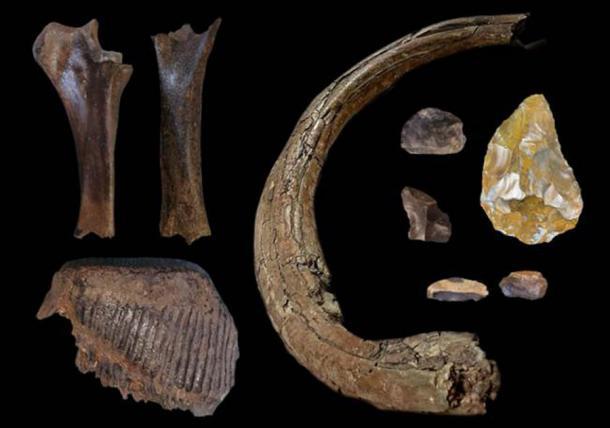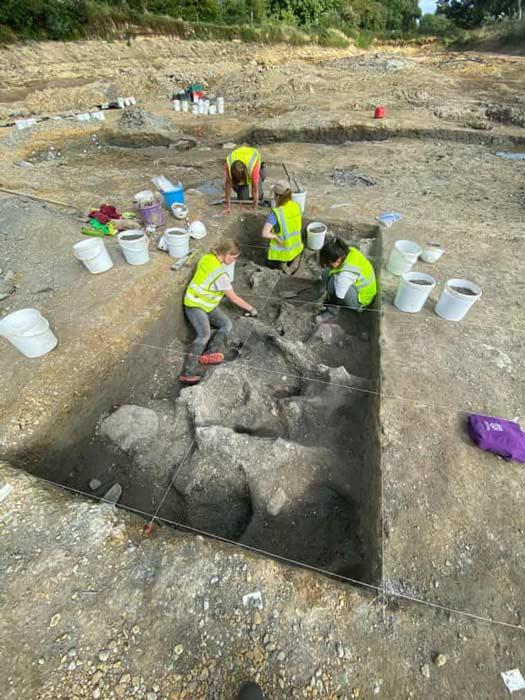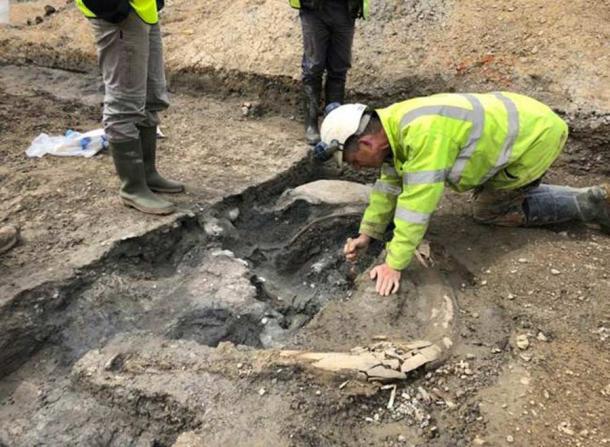The discovery of a mammoth graveyard has provided fascinating insights into the lives of ancient civilizations, offering a rare glimpse into their strength and resourcefulness. Located in a remote area, this burial site has yielded significant findings, including the well-preserved remains of mammoths alongside a remarkable artifact: a Neanderthal hand axe. This tool, crafted with precision, offers important clues about the Neanderthals’ advanced skills and their ability to survive in harsh prehistoric conditions.
The mammoth graveyard itself is an extraordinary archaeological find, revealing the presence of a large group of mammoths that lived thousands of years ago. The site holds a wealth of bones, tusks, and even some of the creatures’ fur, which have been remarkably well-preserved due to the unique conditions of the environment. These findings suggest that the area may have been a site of repeated visits by mammoths, possibly due to its abundance of resources or its use as a natural trap.

One of the most intriguing aspects of this discovery is the presence of a Neanderthal hand axe found among the mammoth remains. This tool, which is typically associated with the Neanderthal people, is made from a large piece of flint and shaped with sharp edges for cutting and chopping. The precision and craftsmanship involved in creating this tool suggest that Neanderthals had not only mastered the art of tool-making but also understood the complexities of their environment. This hand axe serves as evidence of their ability to hunt, process food, and protect themselves from the dangers of the wild.

The discovery of this artifact provides a clearer understanding of the Neanderthals’ physical and mental strength. Despite facing immense challenges, including extreme weather conditions and the presence of dangerous predators, the Neanderthals were able to thrive in their environment through the use of their tools and their ability to adapt. Their survival techniques, evidenced by such tools, reflect a sophisticated understanding of their surroundings and their need to work together in groups to hunt and protect one another.
This finding sheds light on the often-overlooked contributions of Neanderthals to human history. For years, the perception of Neanderthals as primitive and unsophisticated has dominated popular thinking. However, as more discoveries like this hand axe continue to emerge, they challenge this outdated narrative, showing that Neanderthals were capable of much more than once thought. They were intelligent, strong, and innovative individuals who laid the foundation for many of the tools and techniques that would later be used by modern humans.

In conclusion, the mammoth graveyard and the discovery of the Neanderthal hand axe provide compelling evidence of the strength and ingenuity of ancient civilizations. This remarkable find not only deepens our understanding of Neanderthal life but also highlights the resilience of ancient humans in their quest for survival. As more archaeological sites like this are uncovered, they continue to reveal the remarkable history of our ancestors and their enduring legacy.






